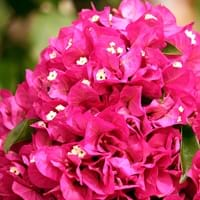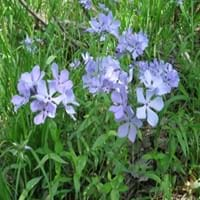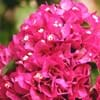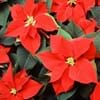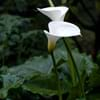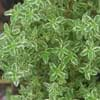Life Span
Perennial
Perennial
Type
Shrub
Flowering Plants
Origin
Hybrid origin
Northeastern United States, Mid-Atlantic United States, Southeastern United States, Central United States, Texas, Canada
Types
Brasilensis, Easter Parade, Formosa, Rosenka (Orange), James Walker, Jubilee Showlady, Barbara Karst, Elizabeth Angus
Blue Moon, Clouds of Perfume
Habitat
Rainforest, Tropical rainforest
Rich Woods
USDA Hardiness Zone
9-11
4-8
Sunset Zone
22, 23, 24
1a, 1b, 2a, 2b, 3a, 3b, 4, 5, 6, 7, 8, 9, 10, 11, 12, 13, 14, 15, 16, 17
Habit
Cushion/Mound-forming
Mat-forming
Flower Color
Gold, Magenta
Blue Violet
Flower Color Modifier
Not Available
Bicolor
Fruit Color
Brown, Green
Not Available
Leaf Color in Spring
Dark Green
Green
Leaf Color in Summer
Dark Green
Green
Leaf Color in Fall
Dark Green
Green
Leaf Color in Winter
Dark Green
Not Available
Leaf Shape
Tubular
Ovate-lanceolate
Plant Season
Spring, Summer, Fall, Winter
Spring
Sunlight
Full Sun
Partial Sun, Partial shade
Type of Soil
Clay, Loam, Sand
Loam
The pH of Soil
Acidic, Neutral, Alkaline
Neutral
Soil Drainage
Well drained
Well drained
Bloom Time
Indeterminate
Spring
Tolerances
Salt
Not Available
Where to Plant?
Ground
Container
How to Plant?
Grafting, Stem Planting, Transplanting
Cuttings, Seedlings
Plant Maintenance
Medium
Medium
Watering Requirements
Medium
Requires regular watering
In Summer
Lots of watering
Lots of watering
In Spring
Moderate
Moderate
In Winter
Average Water
Average Water
Soil pH
Acidic, Neutral, Alkaline
Neutral
Soil Type
Clay, Loam, Sand
Loam
Soil Drainage Capacity
Well drained
Well drained
Sun Exposure
Full Sun
Partial Sun, Partial shade
Pruning
Cut or pinch the stems, Prune for shortening long shoots, Prune if you want to improve plant shape, Prune in the late winter or spring, Prune prior to new growth, Prune to control growth, Remove dead or diseased plant parts
Remove dead flowers
Fertilizers
All-Purpose Liquid Fertilizer
Apply 10-10-10 amount
Pests and Diseases
Aphids, Leaf spot, Mealybugs, Red spider mite, Root rot, Whiteflies
Leaf spot, Powdery mildew, Rust
Plant Tolerance
Drought
Drought
Flower Petal Number
Single
Single
Foliage Texture
Medium
Medium
Foliage Sheen
Matte
Matte
Attracts
Hummingbirds
Hummingbirds, Butterflies
Allergy
Itchiness, Skin rash
Mild Allergen
Aesthetic Uses
Showy Purposes, Used for decorating walls, fences, gates, hedges, etc.
Ground Cover
Beauty Benefits
Not Available
Not Available
Environmental Uses
Air purification
Air purification
Medicinal Uses
Not Available
Boils, Eczema, Intestinal disorders
Part of Plant Used
Whole plant
Flowers, Leaves, Root
Other Uses
Showy Purposes
As a tea substitute, Used as eyewash
Used As Indoor Plant
No
No
Used As Outdoor Plant
Yes
Yes
Garden Design
Container, Foundation, Groundcover, Hedges, Mixed Border, Rock Garden, Wall, Tropical
Mixed Border, Rock Garden / Wall, Wildflower
Botanical Name
BOUGAINVILLEA 'Helen Johnson'
PHLOX divaricata 'Blue Moon'
Common Name
Bougainvillea
Wild Blue Phlox, Woodland Phlox
In Hindi
Bougainvillea
Wild Blue Phlox
In German
Bougainvillea
Wild Blue Phlox
In French
Bougainvilliers
Wild Blue Phlox
In Spanish
Bougainvillea
Wild Blue Phlox
In Greek
Bougainvillea
Άγρια μπλε Phlox
In Portuguese
Bougainvillea
Wild Blue Phlox
In Polish
Bugenwilli
Dziki Niebieski Phlox
In Latin
Bougainvillea
Phlox ferae blue
Phylum
Spermatophyta
Magnoliophyta
Class
Dicotyledonae
Magnoliopsida
Order
Caryophyllales
Solanales
Family
Nyctaginaceae
Polemoniaceae
Genus
Bougainvillea
Phlox
Clade
Angiosperms, Core eudicots, Eudicots
Angiosperms, Asterids, Eudicots
Tribe
Not Available
Phlocideae
Subfamily
Not Available
Polemonioideae
Season and Care of Bougainvillea and Wild Blue Phlox
Season and care of Bougainvillea and Wild Blue Phlox is important to know. While considering everything about Bougainvillea and Wild Blue Phlox Care, growing season is an essential factor. Bougainvillea season is Spring, Summer, Fall and Winter and Wild Blue Phlox season is Spring, Summer, Fall and Winter. The type of soil for Bougainvillea is Clay, Loam, Sand and for Wild Blue Phlox is Loam while the PH of soil for Bougainvillea is Acidic, Neutral, Alkaline and for Wild Blue Phlox is Neutral.
Bougainvillea and Wild Blue Phlox Physical Information
Bougainvillea and Wild Blue Phlox physical information is very important for comparison. Bougainvillea height is 76.20 cm and width 910.00 cm whereas Wild Blue Phlox height is 30.50 cm and width 30.50 cm. The color specification of Bougainvillea and Wild Blue Phlox are as follows:
Bougainvillea flower color: Gold and Magenta
Bougainvillea leaf color: Dark Green
Wild Blue Phlox flower color: Blue Violet
- Wild Blue Phlox leaf color: Green
Care of Bougainvillea and Wild Blue Phlox
Care of Bougainvillea and Wild Blue Phlox include pruning, fertilizers, watering etc. Bougainvillea pruning is done Cut or pinch the stems, Prune for shortening long shoots, Prune if you want to improve plant shape, Prune in the late winter or spring, Prune prior to new growth, Prune to control growth and Remove dead or diseased plant parts and Wild Blue Phlox pruning is done Remove dead flowers. In summer Bougainvillea needs Lots of watering and in winter, it needs Average Water. Whereas, in summer Wild Blue Phlox needs Lots of watering and in winter, it needs Average Water.
